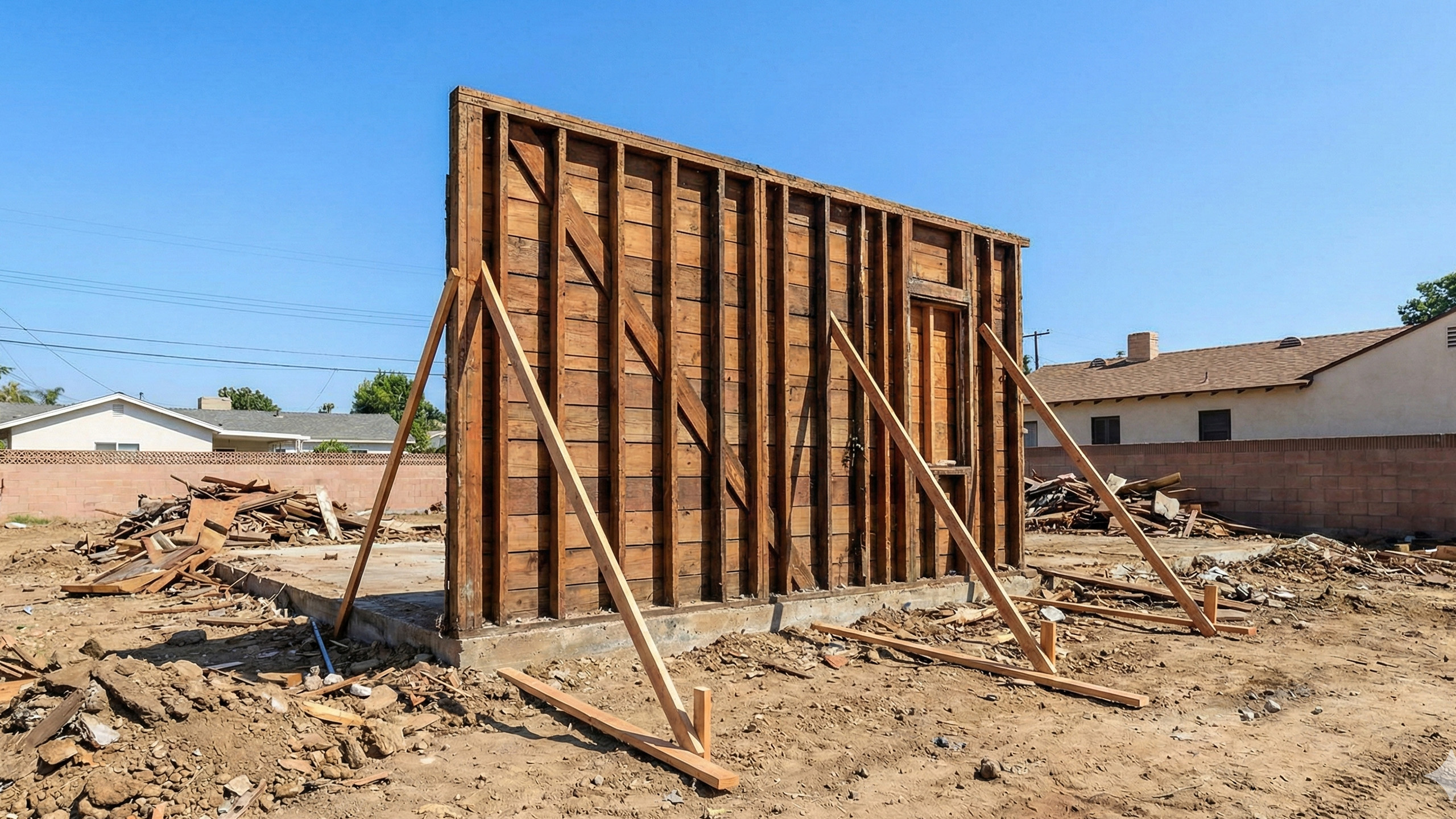We all know urbanization takes its toll on the natural world. This is particularly evident when it comes to stormwater runoff in high-density cities like Los Angeles. With so much land covered by man-made infrastructure - roads, parking lots, roofs - it can be difficult for rain to soak into the soil. This disruption can fill up sewers and local bodies of water, causing flooding, soil erosion, and water pollution. Without corrective protocols in place, the effect on our landscape, wildlife, native vegetation, and water supply can be dire and far-ranging.
So how do firms like Letter Four overcome the challenges presented by this metropolitan problem? Well, for a long time it has come down to a design strategy and requirements called Low Impact Development (LID).
Before we talk about the recent change that the City of LA has made to LID, let’s first understand what it is:
LID is a systemic approach that aims to mimic undeveloped runoff conditions on a developed site. In other words, through LID practices, rainwater can take two very environmentally friendly routes:
- It’s allowed to seep into the ground, as close to where it fell as possible, so that pollutants are naturally filtered through the soil before the runoff enters groundwater basins and streams. See, when stormwater has to travel along city streets and through sewers, it picks up all manner of toxins, chemicals, and other nasty things, which then end up in the ocean.
- It’s harvested in such a way that it doesn’t go to waste or become overly polluted. This means capturing and storing the rain for non-drinking use later. This alleviates pressure on sewer and storm water systems and reduces dependence on strained municipal water supplies. By repurposing precipitation this way, we avoid having to use drinking water for things like maintaining our lawn or washing our cars.

Looking Under the LID: Techniques
That sounds pretty good, right? And what are some of these amazing conservation and utilization methods that LID brings to the table? Ask and you shall receive:
Rain Gardens: Small depressions planted with native shrubs and flowers that collect rainwater from hard surfaces like rooftops or driveways.
Green Roofs: Roofs covered with vegetation that absorb rainwater, reducing runoff and providing insulation.
Permeable Pavements: Surfaces that allow water to pass through, reducing surface runoff and recharging groundwater.
Bioswales: Landscape elements designed to remove silt and pollution from surface runoff water.
Rain Barrels: Containers that capture and store rainwater from downspouts and rooftops for future use watering lawns and gardens.
Built-in Planters: Built structures filled with soil and plants, designed to intercept runoff, slow it down, and filter it through the plants' root zone.
Alternative Water Management Strategies
Greywater Systems: Though not technically a LID method, this is a great way to repurpose water from sources like sinks, showers, or washing machines for uses such as landscape irrigation.
Minimizing impervious surfaces: Reducing the amount of ground covered by concrete and asphalt will allow rainwater to reach the soil, as nature intended.
Preserving natural landscape features: Keeping existing natural elements like trees or wetlands and incorporating them into urban planning will help absorb and store water.
Using native plants: Indigenous vegetation has adapted to local conditions and can more effectively manage runoff than non-native species, while also creating the ideal habitat for wildlife.
Los Angeles Addresses LID Inequity
Los Angeles has been implementing Low Impact Development protocols since 2012. But the city has become aware that the current threshold requirements are not necessarily feasible or inclusive for smaller residential and commercial projects.
Cost Prohibitive
In the past, the primary hurdle for smaller builds in meeting LID regulations has been the significant investment of capital required to install and maintain systems like green roofs, permeable pavements, or bioretention areas.
Lack of Expertise
The technical complexity associated with LID can also be a deterrent. Larger entities often have access to specialized staff or consultants, while smaller developers lack such resources.
Site Limitations
Property size constraints pose another significant challenge. Small properties may not have sufficient space or layout to install certain LID designs, such as a rain garden or a vegetated drainage channel.
There’s a New LID in Town
Los Angeles is deep in a housing crisis and the one-size-fits-all approach to the protocols of yesteryear isn't doing anyone any favors. So the city has revised regulations, acknowledging the varying scales of a development, with hopes of promoting the wider adoption of LID principles in general.
LA has announced these pivotal LID updates for 2024:
- Removal of the 500 square feet of impervious surface trigger for projects with four or fewer residential units. Now only projects in an Environmentally Sensitive Area that create or replace a minimum of 2,500 SF of impervious area must comply.
- Adherence also applies to new redevelopment projects that will be replacing or adding 5,000 square feet or more of impervious surface on sites over 10,000 square feet.

LID is for Everyone
Home Owners
While the threshold for LID compliance has changed, it’s important to note that if you own a single-family residence you can always voluntarily employ LID methods for long term reductions in your expenses, as well as environmental impacts. When you embrace LID principles during either new construction or an upgrade of your current property, you'll see a dramatic decrease in water usage. What's more, sustainable stormwater systems are generally less labor-intensive than their traditional counterparts, translating into even more savings for you.
Think about the potential future advantages too. You can reduce your water costs and at the same time promote environmental preservation. If you ever choose to sell your property, thoughtfully crafted eco-friendly spaces with practical water conservation features can greatly enhance its worth and appeal. This positions you for a greater return on investment, thus making every penny spent worthwhile.
Developers
Navigating the new regulations might initially seem challenging for developers, but it's essential to recognize the substantial opportunities that come along with them. By embedding LID principles into your projects, the benefits are twofold: a decrease in maintenance and construction expenses and an enhanced reputation as pioneers in sustainable development. It's noteworthy that stepping into the sustainability arena increasingly provides an advantage over any conventional methods. Moreover, the green infrastructure sector holds a wealth of potential for government incentives and grants.
For those engaged in single-family property development, the aforementioned homeowner benefits apply here too. This is also applicable to larger scale developments abiding by LID rules. Let's take this case: if you're developing rental properties, you're likely to experience cost reductions due to possibly lower water bills. Alternatively, if you aim at developing properties for sale, you might attract an environmentally aware buyer.
Design Professionals
Architects, landscape designers, and engineers have always had the ability to transform spaces. But now, with new rules in place, you have a special chance to show how clever design can tackle environmental issues while creating attractive and useful areas.
With these new guidelines, even those working on smaller properties are encouraged to reduce their clients' impact on the environment. By offering solutions that minimize water usage and contribute significantly to onsite stormwater retention, you can make a significant contribution to environmental conservation.
The fact that LID methods are no longer required for smaller projects presents an opportunity to expedite the permitting process by a month or more for most clients. Furthermore, it can save you thousands of dollars on construction budgets. This isn't just about compliance with regulations; it's about leading the way in sustainable development.

LID is for the Future
Let's consider this moment as a call to action. An opportunity to reshape the landscape of Los Angeles and create a resilient city that thrives in harmony with nature. Let’s be a part of a more sustainable future here at home while setting the standard for urban development across the globe.
If you’re ready to make conservation a priority, but need expert guidance, don't hesitate to contact Letter Four. While LID requirements may no longer apply to your project, we can work with you to reduce your water consumption as we create a beautiful, eco-friendly home for you and your family.






.svg)























.png)